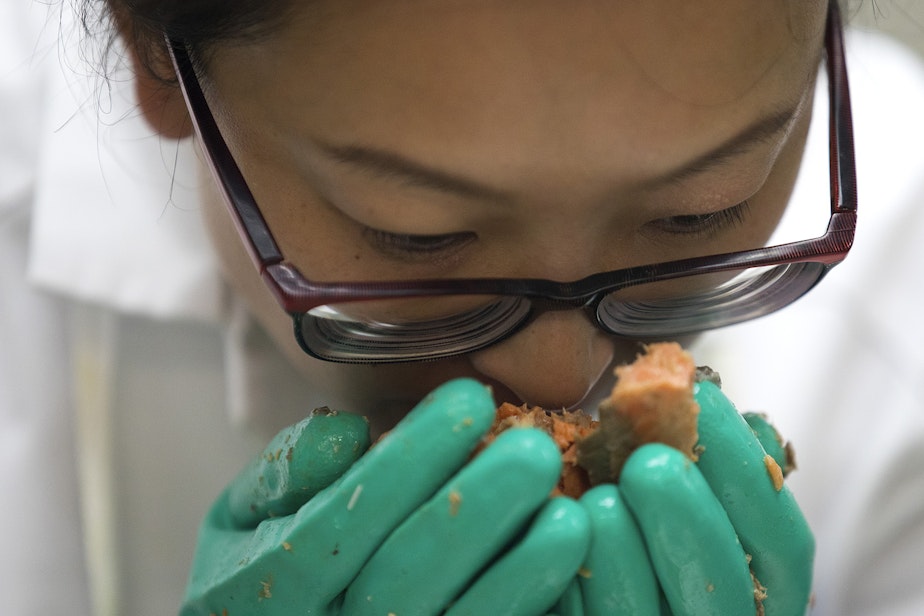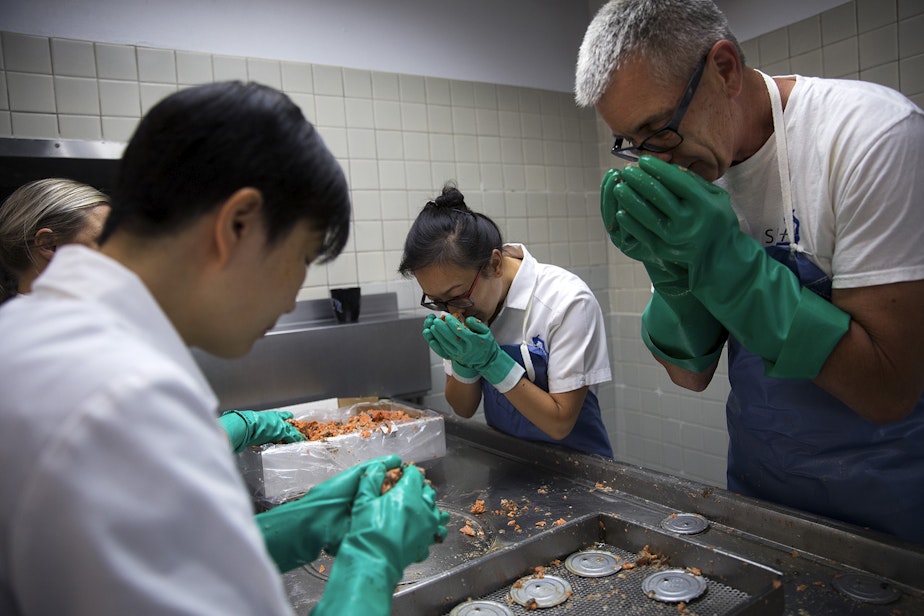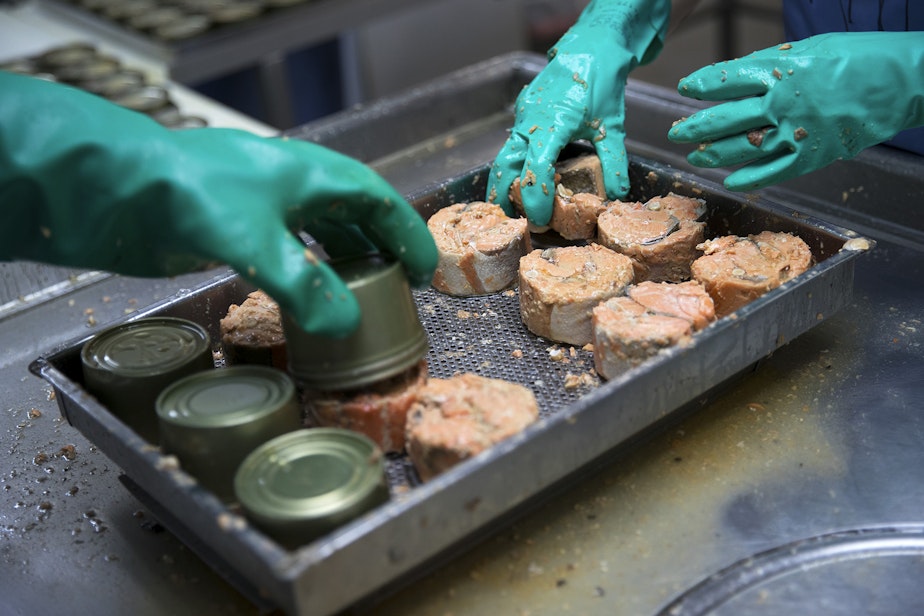This Seattle woman sniffs 500 cans of salmon a day — for you

There’s the bunny sniff (sniffsniffsniff).
The medium sniff (sniiiiifff).
And the long sniff (snnniiiiffff).
Virginia Ng says she usually goes for the medium sniff because she has small lungs.
Ng is a Nose, trained by the U.S. Food and Drug Administration, to smell cans of salmon from Alaska canneries.
She works at Seafood Products Association, a nondescript brick building on Jackson Street in Seattle.
Sponsored
It’s a small outfit that traces its origins to World War I, when canned salmon became a huge source of food for the U.S. military.
After the war, rotten salmon turned up in some cans, so the industry worked out a testing process to ensure safety. That began in 1919.

The best testing method, they realized, was the human nose.
Under the supervision of the Federal Food and Drug administration, they train sensory analysts and test most, but not all, canned salmon entering the market.
Sponsored
Right now is the busy season for the sensory lab. Long metal tables are piled high with unmarked cans of salmon ready to be sniffed by the Noses.
The cans, light copper in color, are lined up just so.
“The order is very important,” Ng said, “so if you were to knock a pile you would mess up everything.”
The room has a faint echo, and the cracking sound of cans being punctured is sharp. Round blocks of salmon are then dumped onto a table where the Noses pick them up by the handful.
Snnniiiiiiifffff.
In each shift, The Noses will test 500 cans of salmon. They inhale, look, and sometimes taste.

Food and Drug Administration officials train the Noses to pick up indicators that seafood is good – smells like briney or canned chicken — from smells that suggest the seafood is borderline – cardboard, fishy — to smells that suggest the fish should be rejected.
“Odors of composition include slight sour, slight ammonia, yeast,” Ng said. “Fecal” — as in poop — “is the worst.”
Sponsored
Sometimes the aromas are misleading. Decomposed Mahi Mahi smells like parmesan cheese. To a seafood sensory expert, the worst thing to order at a restaurant is parmesan crusted Mahi Mahi.
If the smell is particularly putrid, they’ll recalibrate by smelling themselves.
Sniff shifts are limited to one hour, because olfactory fatigue sets in.
Why not use a robot nose?
“It can't go at the same speed a human nose can in this situation,” Ng said. “Our noses identify so many smells.”
Sponsored
The Noses have proven effective.
In 1982, there were cases of botulism traced back to a Ketchikan cannery, and the industry stepped up inspection of cans. Today contaminated salmon cans usual come from home canning, not from commercial canneries.

Bruce Odegaard, the vice president of Seafood Products Association, takes shifts as a Nose.
He’s in his 40th salmon season. Odegaard’s grandfather was a fisherman in Norway. He fished with his father in Petersburg, Alaska.
“It’s surprising when we go out to lunch the number of people who will choose salmon off the menu,” he said. “Examining so much product you get an appreciation for the fish.”
Ng said she will often settle into a salmon salad after sniffing 500 cans of fish.
“I love salmon salad we'll eat really good fish, and sometimes it’s my breakfast,” she said.
The noses will be busy sniffing canned salmon until mid-September.




